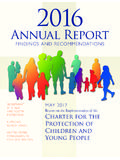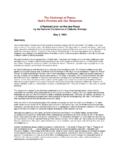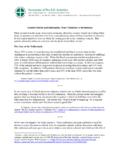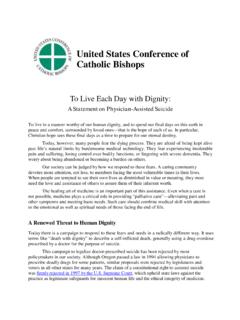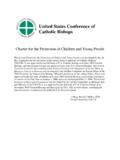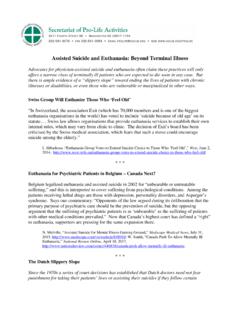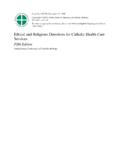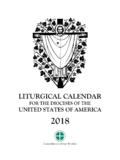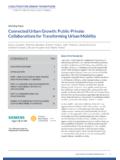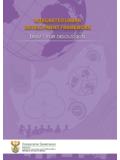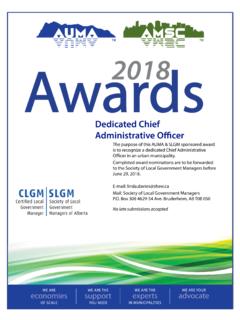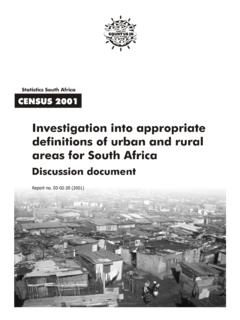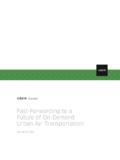Transcription of Sustaining Urban Catholic Elementary Schools - …
1 SustainingUrban CatholicElementary SchoolsAn Examination of Governance Models and Funding StrategiesErik P. Goldschmidt, , Mary E. Walsh, for this project was graciously provided by the Mathile Family CAROLYN A. AND PETER S. LYNCH school OF EDUCATIONC over photos used courtesy of Gary Wayne Gilbert, Director of Photography, Boston Urban Catholic Elementary SchoolsSustainingUrban CatholicElementary SchoolsAn Examination of Governance Models and Funding StrategiesErik P. Goldschmidt, , Mary E. Walsh, for this project was graciously provided by the Mathile Family CAROLYN A. AND PETER S. LYNCH school OF EDUCATION2011 2011 Boston College, Chestnut Hill, MassachusettsiiN N NiiiSustaining Urban Catholic Elementary SchoolsDecember 2011 Dear Reader:You are likely well aware of the many challenges that are eroding the viability of Catholic Schools across the country. The facts are daunting: since 1963, the Catholic Church in the United States has lost nearly half (48%) of its Schools and has suffered a 63% decline in enrollment.
2 The declines are sharpest in the Urban environments where the financial demands, diminished resources, and demographic changes have placed insurmountable strain on vulnerable parish Schools serving low-income populations. The evidence points to a clear conclusion: in most cases, the single-parish Elementary school in the Urban environment is not sustainable, despite the heroic effort of Catholic education stakeholders to save these is less known is that in response to the growing challenges, many school leaders, diocesan officials, and other stakeholders in Catholic education have developed innovative and promising approaches to improving the sustainability of these Schools . school governance and finance have been a central focus of these efforts. Concerned for the future of Catholic Schools and encouraged by the creative ingenuity of Catholic school leaders who are thinking out of the box, we engaged in a national study of the governance models and funding strategies currently utilized by Urban Catholic Elementary Schools .
3 This report, Sustaining Urban Catholic Elementary Schools : An Examination of Governance Models and Funding Strategies, presents the findings and cites examples of Schools and dioceses that have implemented these approaches. We point out the innovative trends that cut across the governance models and funding strategies and offer concrete recommendations to improve the sustainability of these Schools . Our hope is that this report can serve as a resource to assist Catholic educational leaders and stakeholders in planning for the future for Catholic Schools . We welcome your ideas, experiences, and feedback, and look forward to an open conversation, at all levels of the church, on the merits of these approaches and the usefulness of our recommendations. Without a coordinated effort to develop sustainable Catholic Schools , we risk losing this vital ministry in Urban centers across the country. Sincerely,Erik P. Goldschmidt, , Mary E.
4 Walsh, CAROLYN A. AND PETER S. LYNCH school OF EDUCATION 2011 Boston College, Chestnut Hill, MassachusettsivAcknowledgementsWe sincerely thank the Mathile Family Foundation for their support of this research. In addition, we thank their staff who shared their accumulated learning, thereby laying a strong foundation for this sincere gratitude also goes to the participants in this study who generously made time for phone conversations, email correspondence and sharing documentation of their work. Their willingness to engage in these discussions helped us to gain rich insights into the critical work of their Schools , dioceses, universities, foundations, and other organizations seeking to strengthen Catholic , we thank our research assistants, Karen Schreiner and Michael Gardner, for their excellent contributions toward the completion of this report. Sustaining Urban Catholic Elementary Schools1 Table of ContentsExecutive Introduction ..52. Models of Governance ..14 Parish Schools .
5 14 Private Schools ..15 Inter-Parish Schools ..17 Diocesan Schools ..18 Consortium Schools ..20 Private Network K-12 school Systems ..23 University Partnership Schools ..24 Faith-Inspired Charter Schools ..253. Funding Strategies ..27 Tuition and Fees ..28 Parish Subsidies ..29 Diocesan Subsidies ..30 Large-Scale Scholarship Funds ..30 Development Programs ..31 Leveraging Economies of Scale ..32 Catholic College and University Programs ..34 school -Community Partnerships ..36 Niche Programming ..38 Endowments ..39 Patron Programs ..40 Private Grantmaking ..41 Federal Funding ..42 State and Local Government Funding ..454. Innovative Trends in Governance and Finance ..475. Recommendations for Future Work ..526. Appendix: Sources of Data Reviewed ..627. Endnotes ..678. References ..719. About the Authors ..77 2011 Boston College, Chestnut Hill, Massachusetts2 Executive SummaryNearly half of Catholic Elementary Schools have closed in the United States since their peak in the 1960s.
6 This alarming rate appears to be the result of increased cost of running a school . These challenges are compounded in the Urban centers where families are unable to pay increasing tuition costs and parishes lack adequate resources to support a school . The Catholic school decline is most often linked to a financial crisis. In addition, Catholics appear to be increasingly less likely to view Schools as a vital ministry of the the last two decades, the National Catholic Educational Association has played an important role in documenting the crisis in Catholic education. The United States Conference of Catholic Bishops has challenged the entire Catholic community to respond to the crisis. Catholic colleges and universities, the philanthropic community, independent think tanks, and consulting firms have demonstrated leadership in convening public symposia, developing academic programs, publishing analytical reports, and founding innovative programs and initiatives. Improving the governance models and the financial management of Schools has been the common agenda of these efforts to stabilize, strengthen, and sustain Urban Catholic Elementary the generous help of the Mathile Family Foundation, the authors examined the governance models and funding strategies currently in use by Urban Catholic Elementary Schools .
7 Over 60 focused interviews were conducted with key informants across the country ( , superintendents, foundation executives) and hundreds of documents were reviewed ( , annual reports, websites). While not aiming to review every single diocese, this report offers a representative description of the governance models and funding strategies utilized by Urban Catholic Elementary Schools across the United States. Specific examples are examined. The report is intended to be a resource for dioceses, Schools , researchers, philanthropists, and other stakeholders in Catholic education to assist in strategic planning for Urban Elementary least eight major governance models for Urban Catholic Elementary Schools have been identified in contrast to a nearly ubiquitous model of years past in which a single school was governed and financed by one parish. These differing approaches to school governance have emerged as a result of concerns about sustainability. The alternative models At least eight major governance models for Urban Catholic Elementary Schools have been identified in contrast to a nearly ubiquitous model of years past in which a single school was governed and financed by one Urban Catholic Elementary Schoolsinclude simple collaborations such as inter-parochial Schools (sponsored by multiple parishes) and diocesan Schools (a principal reports to the superintendent rather than to the pastor).
8 Efforts to utilize economies of scale have resulted in linking several Schools into a consortium that employs an umbrella of shared administration, operations and resources. Other examples of innovation include networks of Schools , a cluster of Schools aligning into a K-12 system, and a school co-owned by a parish, a diocese and a university. In addition, the controversial faith-inspired charter school model involves converting Catholic Schools into publicly funded non-profit organizations; Catholic educators are exploring how faith-based values and mission can be infused implicitly into a public day school and explicitly into a voluntary afterschool response to the crisis, a variety of funding strategies have been developed to keep Urban Catholic Elementary Schools open. Clearly, most Catholic Schools cannot be supported by tuition alone. Parish Schools , particularly in Urban areas, are a financial burden for their associated parish and increasingly for the diocese. Scholarship drives, development programs, patron programs, and other donor support have effectively engaged the philanthropic community.
9 Leveraging economies of scale has resulted in reduced spending through eliminating redundancies in operations, increasing purchasing power, and sharing resources across Schools . Endowment programs have allowed Schools to fiscally invest in their future. Collaborative partnerships with colleges and universities, community organizations, and other Schools have increased access to resources and expertise. Federal funding is a largely underutilized resource to which high-poverty Catholic Schools are entitled. Catholic Schools in many states benefit from voucher programs, tax credits, early childhood funding, transportation assistance and funding for wide variety of governance models and funding strategies examined in this report demonstrate some of the innovation in Urban Catholic Elementary Schools across the country. While this study did not evaluate the effectiveness of each example cited, the available evidence does suggest potential for improved stability and increased income for Urban Catholic Elementary Schools .
10 Common themes can be extracted to guide exploration, development, and implementation of practices that will improve the management of Urban Catholic Schools . Centralized operations, collective procurement and greater collaboration with neighboring Schools , community organizations, institutions of higher education and the philanthropic community appear to lower costs and increase access to resources. Increased use of strategic The future of Urban Catholic Elementary Schools requires that we identify, implement, measure, and market models that demonstrate effective governance, financial sustainability, and academic quality. 2011 Boston College, Chestnut Hill, Massachusetts4planning, data-informed practices, professional business practices, and diversified funding sources suggest the importance of more sustainable financial and management practices. Finally, accessing federal and state funding, as well as continued advocacy for public funding and tax credits, point to potentially substantial sources of public support for these report concludes with concrete recommendations.
